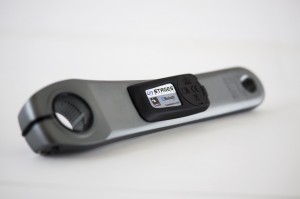A female cyclist’s guide to measuring your progress
I’ve recently started working with a coach. It’s the first time I’ve used a coach and it’s come about because I’m involved with my cycling club’s women’s team. I don’t really consider myself to be a fully fledged member of the racing team but I decided as one of the key administrators of the team, I’d step up and try a bit more racing this year.

Set a goal
So if you ‘re interested in stepping up and either developing your own training program or working with a coach you need to set yourself a goal. Without a specific goal you might as well just continue to be a keen recreational cyclist. There is of course nothing wrong with that, but if you’re serious about training you need to know where you are heading.
Don’t make it so easy that you’ll achieve it in the first month, make it a challenge. And make sure it’s specific like, “I’m going to research all the cycling clubs in my area, join up and try my first race by the middle of this year”. Or it could be that “I’m going to participate in a timed ride like the Amy Gillett Gran Fondo in September 2014”.
My main goal is to improve my time in my Club Championship Individual Time Trial in July. I have all the stats from my first two attempts so I’ll be able to easily measure if there’s an improvement.
Measurement
The second thing you need to work out is how you are going to measure your program which you can do in a number of ways.
Firstly, you need a good bicycle computer like a Garmin or Magellan device that is specifically designed for cycling. It needs to record important parameters like distance, speed, time, average speed, cadence, heart rate and power output. You can download all the data from your bike computer to your home computer which gives you a record of all your rides as well as a way to analyse. You can buy the computer in a ‘bundle’ which means it includes a heart rate strap (that you wear) and a speed/cadence sensor (that you fit to the chainstay of your bike).
A lot of keen cyclists will rush out and buy a power meter but you can actually measure your progress using a perceived rate of exertion scale and/or your heart rate. Either way you need to measure your rides so you can see if you are improving. It will also help you identify weaknesses like hill climbing.
The Perceived Rate of Exertion (PRE) was dreamt up by a guy called Borg and is basically a subjective measure of how hard you feel your body is working. It is based on the physical sensations you experience during physical activity, including increased heart rate, increased respiration or breathing rate, increased sweating, and muscle fatigue. In isolation it is a bit subjective but used in conjunction with your heart rate can tell you and your coach a lot about your progress.
Your bike computer can give you a fairly accurate reading of your heart rate (as long as you’re wearing a heart rate strap that fits neatly below your bra line) which will tell you how hard you are working. You need to establish a maximum heart rate which you can calculate using a number of formulas or just noting the highest your height rate reaches when you are at your maximum exertion.
If you do decide to go the full hog and get a power meter there are a number of different types available. There’s the Quarq system that attaches to your drive side crank, the Stages system which replaces your non-drive side crank arm, several different hub systems, the Garmin Vector pedal system and the one favoured by many pros – the SRM crank system.
I’ve not used any of them so can’t tell you which is better. They range in price from about $800 for Stages to a couple of thousand for the SRM. SRM also makes a head unit (computer) but other bike computers like Garmin and Magellan will also display your power output.
There’s heaps of product reviews about them so do a Google search or read the reviews in magazines like Bicycling Australia which has covered the subject extensively.
You can also record your progress in a program like Training Peaks. It’s free to sign up and use the most basic version, and allows you to record all your rides and upload your bike computer files.
